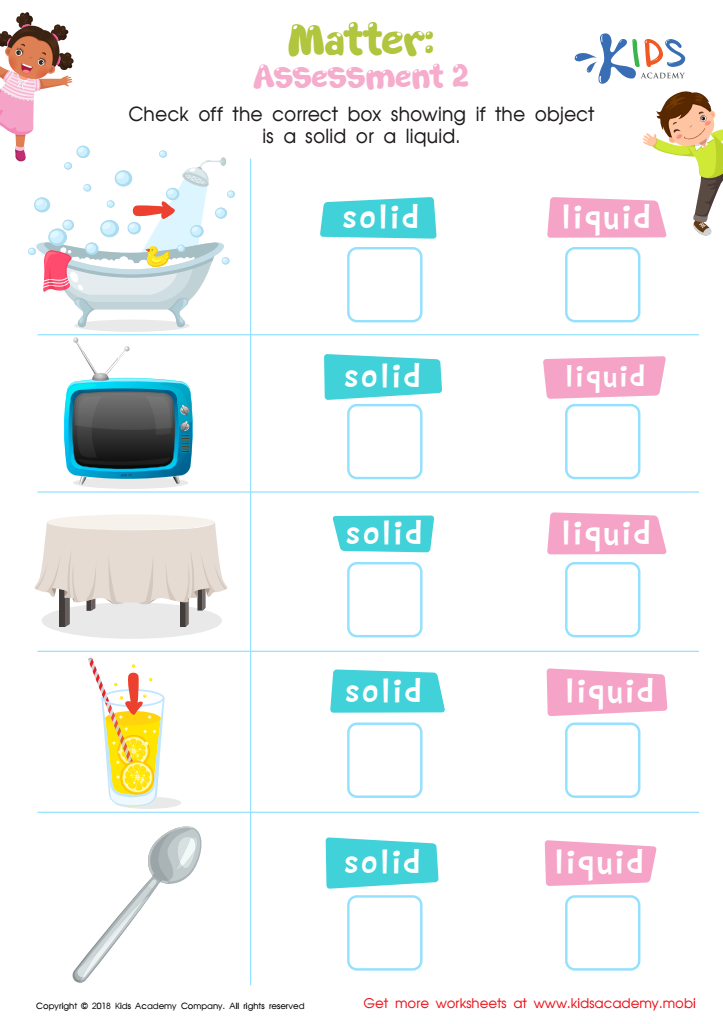Comprehending matter changes Worksheets for Kids
1 filtered results
-
From - To


Matter: Assessment 2 Worksheet
Question/Answer
How does the mastery of the Comprehending matter changes skill affect a student's performance at an early age?
Mastering the "Comprehending Matter Changes" skill at an early age significantly boosts a student's performance by enhancing their understanding of physical and chemical changes in materials. This foundational knowledge improves critical thinking, analytical skills, and curiosity about the natural world, leading to better academic outcomes in science subjects and a stronger grasp of complex concepts later on.
How to train the Comprehending matter changes skill in Grade 2 students learning about Physical Science?
To train Grade 2 students in comprehending matter changes, engage them in hands-on experiments such as melting ice, evaporating water, or mixing substances to observe reactions. Use visual aids and simple explanations to discuss states of matter (solid, liquid, gas) and physical changes.
How to test a Grade 2 student’s Comprehending matter changes skills?
To test a Grade 2 student's understanding of matter changes, provide them with simple, hands-on experiments such as melting ice, evaporating water, or mixing water with salt, and then ask them to observe and describe the changes they see. Use questions or worksheets to assess their ability to identify whether the changes are reversible or irreversible.
 Assign to the classroom
Assign to the classroom












